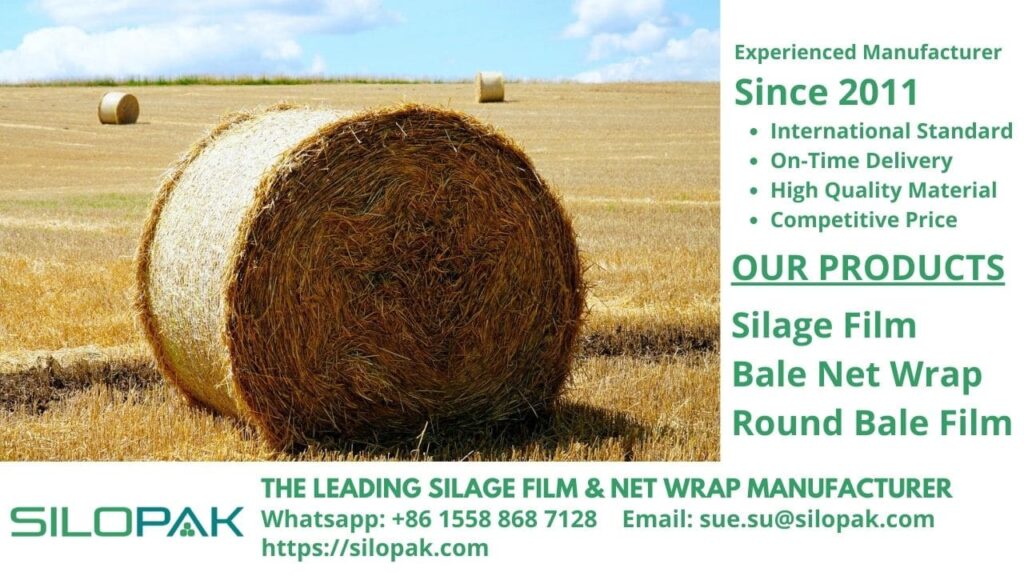
A round bale is perhaps one of the most common types of bale found out there. In making one, a special round baler is utilized. The other most common type would be the square bale, but there is something about the round variety that makes it simply preferable for farmers.
The round baler rolls or rounds the crops up into a cylindrical shape. A round bale formed this way possesses the so-called thatched roof effect that helps protect itself against fluctuating weather. The baler comes with a specific device within that works to roll up its content: rubberized belts, fixed rollers, or something that is a mix of the two elements.
When the baling stage completes, the bale is tied up using either twine or netting to help it retain its shape until later use. The baler will swing open on its back to discharge the resulting bale. While the produced bales are considered ready for use at this stage, farmers may opt to cover them in a wrapper. The purposes of sealing the bales are to protect them against moisture, keep them dry, or ferment damp bales, converting them into silage.
A typical round bale device can put out bales in a variety of diameters and widths, 120-180 cm and 150 cm, respectively. The typical weight of a bale could measure anywhere from 500 to 1.000 kg. Smaller-sized balers, on the other hand, can produce bales with a diameter range of 51 to 56 cm, a width range of 52 to 71 cm, and a weight range of 18 to 25 kg. These small balers are also known as roto-balers or mini round balers.
contents
Taking a Look Back at the History of Round Bale Machine
The history of round bale devices can be traced back to around 1910. The device was only in its conceptualized form that Ummo Luebben conceived. It wasn’t until 1947 that the actual production of the machine entered its first stage of commercialization, beginning with Allis-Chalmers producing the first roto-baler. Allis-Chalmers managed to sell almost 70,000 units of roto-balers until it stopped producing them in 1960. The bales produced through this machine were known for their properties of water-shedding and lightweight.
The next innovation came from a professor from Iowa State agricultural engineering named Wesley Buchele, a baler capable of producing large bales that could be easily moved using a tractor. Gary Vermeer from Iowa invented a round baler based on the design by Allis-Chalmers in 1972. The device is known as the first modern round baler and makes use of belts to help the compacted hay to keep its cylindrical form, a mechanism that is still in use today.
At the beginning of the 1980s, a new system of CV joints was introduced and had been known for being the first effective implementation of said joints in a baler machine.
The Most Important Tool in Handling a Round Bale
A round bale is prone to rolling down a slope. This is the primary reason why a bale of this type requires special care so that transportation and handling of them can be conducted smoothly and without hassle. Smaller bales of round shape can be handled rather conveniently by hand or using farming equipment of lower power.
However, if the bale is just too big, it requires specific machinery to handle its transportation. The bale spear or spike is arguably the most important tool used in handling a bale of large size. The spear will go directly into the middle section of a bale. The operator will then lift it to haul the baled hay away. The second the bale gets to its intended spot, the farmer will pull the spear out.
During the operation using this spear, the farmer must be careful at every step of the way lest they risk letting the bale spin and touch the ground in the process. Control may be lost due to this. If the bale has already been wrapped, the use of the spear will leave holes on the surface, which requires sealing to keep moisture out.
Entrusting Your Round Bale Requirements only to the Best
Speaking of round bale wrapper, Silopak has every size of it for you to use for safe storage. Our wrapping products are known for their wear and tear resistance, so you can rest assured that the bale can remain fresh and safe for your livestock to eat. Ask us any questions about how our products may be able to protect your round bale, and we will be more than happy to assist.

